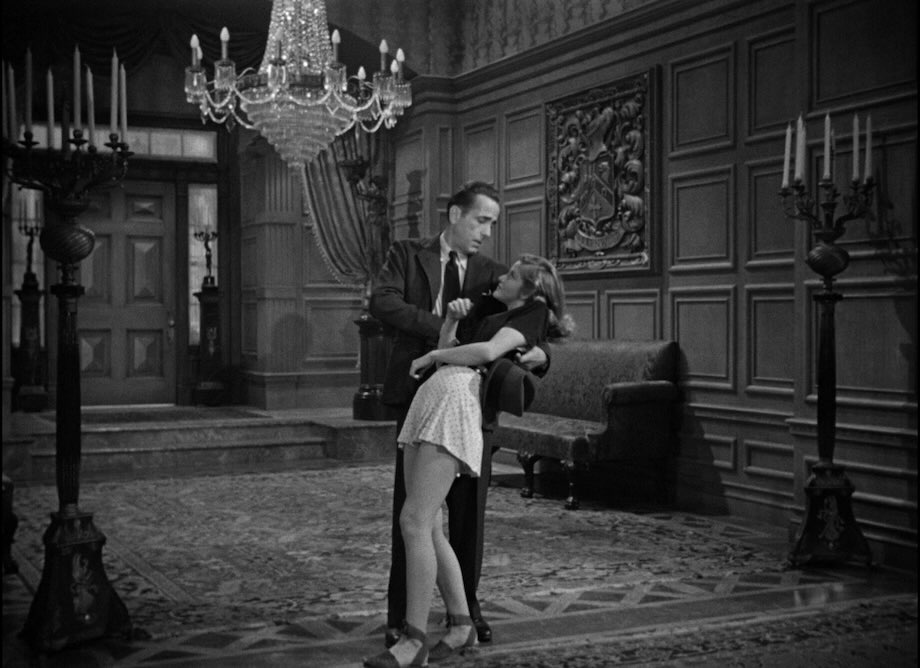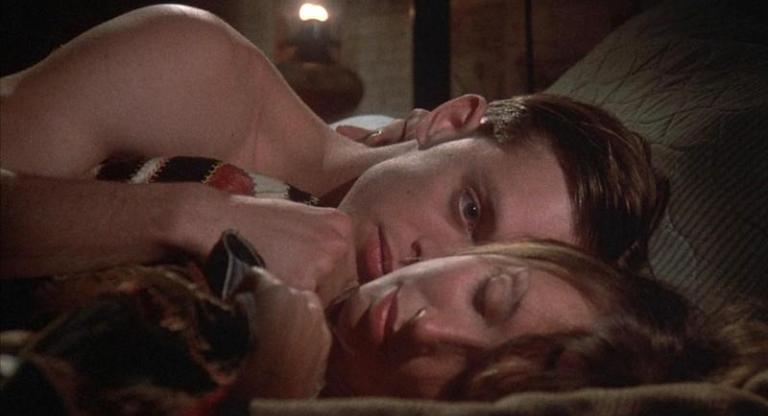Summer ends in Palo Alto, as it often does, but some evenings at the Stanford Theatre, you can see Humphrey Bogart as the hardest Philip Marlowe the silver screen has ever known, boiling away in General Sternwood’s greenhouse room, deleting bourbon, and talking fast. The younger, wilder Carmen Sternwood (Martha Vickers), oozing down the spiral staircase in polka-dot shorts. In the dark of the old theater, the smell of warm liquor and wilting orchids reaches out toward you. On-screen: “You’re not bad,” Carmen tells Marlowe, “but you probably know that.”
The Big Sleep (1946) is an adaptation of Raymond Chandler’s detective novel of the same name; director Howard Hawks typically veered far from the course of his source texts in pre-production, his irreverence somewhat of a signature. Not here. Instead, Hawks instructed his writer’s room, which included William Faulkner, to stick close to the original novel. While Hawks took major liberties from the script during production—especially evident in the sometimes disorganized second half of the film—his adaptation was written more or less faithfully to the book; it follows Phillip Marlowe, a private detective on assignment for the infinitely wealthy General Sternwood, who is looking to settle Carmen’s debts. Carmen’s older, more sensible sister Vivian (Lauren Bacall) catches wind of Marlowe’s new involvement and suggests there may be more to the job, something that involves the sudden disappearance of Shawn Regan, the General’s former shamus. Dialogue flies and sex comes easily—then, a flash and a terrible scream.
Despite the faithful storytelling, The Big Sleep barely makes sense. But you probably know that. Instead, you’ll go watch the film to see Bogart and Bacall firing on all cylinders in their second film together, deeply in love but not yet permitted to be together. After a summer apart—mandated by Hawks, who saw their affair as a threat to their volcanic chemistry—Bacall couldn’t hold a drink or smoke a cigarette on-screen without a visible nervous tremor in her hand; Hawks filled the bottom of her prop glasses with lead to give her something to anchor onto, per Hawks biographer Todd McCarthy. She had just turned twenty. Bogart, twenty-five years her senior, did his part by drinking himself sick, spending days in his trailer with his head in his hands, unable to shoot, begging his third wife to go to rehab—then, leaving her for Bacall anyway. It all might just be lore, but it’s nice to allow ourselves the small pleasure of believing we see Bacall’s wrist flick, or a drunken glitter in Bogie’s eye, like watching the clouds and trying to make shapes out of them.
For the opening weekend of the Stanford’s “Film Noir” series—running into November—The Big Sleep is the natural choice. An apparently narrative film that loses itself to the allure of those floating signifiers of noir-ety, smokey alleyways with a pistol’s muzzle buried in the bad guy’s back, and the cold leather seats of a Plymouth Deluxe.
The Big Sleep screens on a double bill with The Maltese Falcon this Friday, September 6, and throughout the weekend, at the Stanford Theatre as part of the series “Film Noir (plus Val Lewton).”




